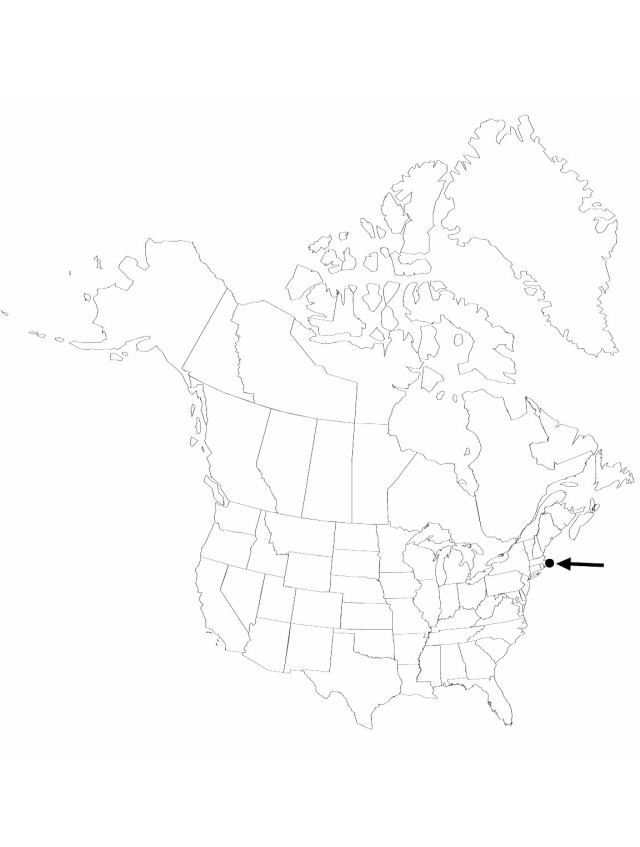Difference between revisions of "Juncus pervetus"
Rhodora 19: 17. 1917.
FNA>Volume Importer |
imported>Volume Importer |
||
| (6 intermediate revisions by 2 users not shown) | |||
| Line 6: | Line 6: | ||
|place=19: 17. 1917 | |place=19: 17. 1917 | ||
|year=1917 | |year=1917 | ||
| + | }} | ||
| + | |special_status={{Treatment/ID/Special_status | ||
| + | |code=E | ||
| + | |label=Endemic | ||
}} | }} | ||
|basionyms= | |basionyms= | ||
| Line 23: | Line 27: | ||
|elevation=0 m | |elevation=0 m | ||
|distribution=Mass. | |distribution=Mass. | ||
| − | |discussion=<p>All sheets that I have seen have aborted seeds. Juncus pervetus was thought to be Juncus subnodulosus, a European native (H. Weimarck 1946). It has been shown that this is a distinct species, however (S. Snogerup and B. Snogerup 1996). It would appear that this species is now extinct.</p> | + | |discussion=<p>All sheets that I have seen have aborted seeds. <i>Juncus pervetus</i> was thought to be <i>Juncus</i> subnodulosus, a European native (H. Weimarck 1946). It has been shown that this is a distinct species, however (S. Snogerup and B. Snogerup 1996). It would appear that this species is now extinct.</p> |
|tables= | |tables= | ||
|references={{Treatment/Reference | |references={{Treatment/Reference | ||
| Line 38: | Line 42: | ||
-->{{#Taxon: | -->{{#Taxon: | ||
name=Juncus pervetus | name=Juncus pervetus | ||
| − | |||
|authority=Fernald | |authority=Fernald | ||
|rank=species | |rank=species | ||
| Line 52: | Line 55: | ||
|publication title=Rhodora | |publication title=Rhodora | ||
|publication year=1917 | |publication year=1917 | ||
| − | |special status= | + | |special status=Endemic |
| − | |source xml=https:// | + | |source xml=https://bitbucket.org/aafc-mbb/fna-data-curation/src/2e0870ddd59836b60bcf96646a41e87ea5a5943a/coarse_grained_fna_xml/V22/V22_294.xml |
|genus=Juncus | |genus=Juncus | ||
|subgenus=Juncus subg. Septati | |subgenus=Juncus subg. Septati | ||
Latest revision as of 20:30, 5 November 2020
Herbs, perennial, rhizomatous, 7–10 dm. Rhizomes 3–7 mm diam., nodes not swollen. Culms erect, terete, 2–4 mm diam. Cataphylls 2–3, straw-colored, apex rounded. Leaves: basal 0, cauline 1; auricles 0.5–1.5 mm, apex blunt, cartilaginous; blade 25–35 cm × 1–2 mm. Inflorescences terminal panicles of 24–60 heads, 5–10 cm, branches spreading; primary bract erect; heads 15–50-flowered, spheric, 4.5–6 mm diam. Flowers: tepals light brown, lanceolate to oblong, 2–2.5 mm, nearly equal; stamens 6, anthers longer than filament. Capsules included with beak slightly exserted, chestnut brown, 3-locular, ovoid, 2.5 mm, apex acute proximal to beak, valves separating at dehiscence, fertile throughout or only proximal to middle. Seeds not seen.
Phenology: Fruiting fall.
Habitat: Upper border of salt marsh
Elevation: 0 m
Discussion
All sheets that I have seen have aborted seeds. Juncus pervetus was thought to be Juncus subnodulosus, a European native (H. Weimarck 1946). It has been shown that this is a distinct species, however (S. Snogerup and B. Snogerup 1996). It would appear that this species is now extinct.
